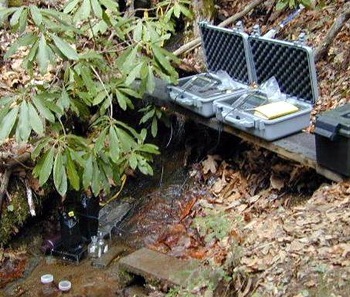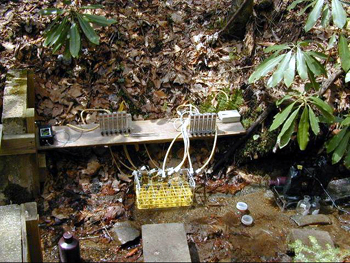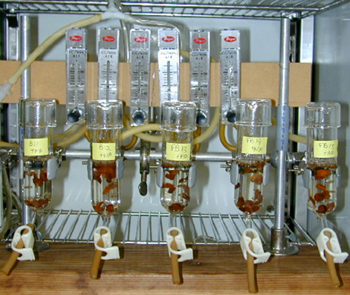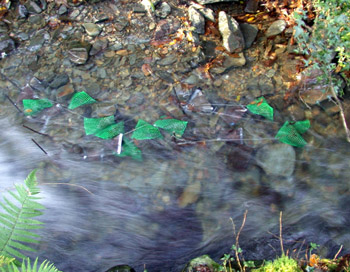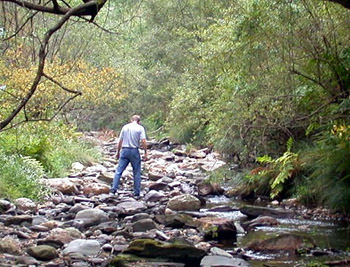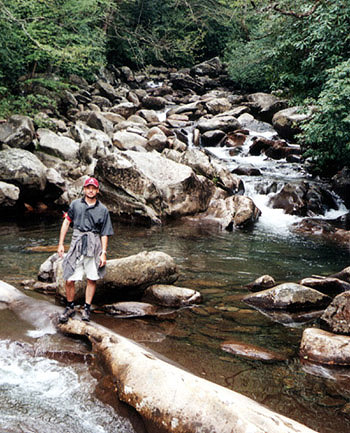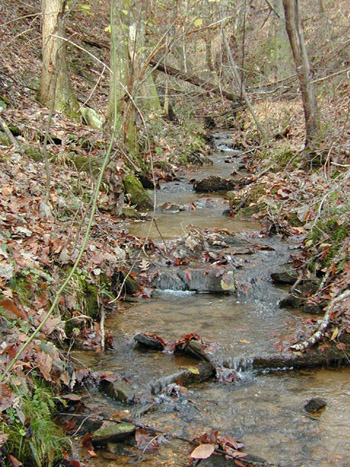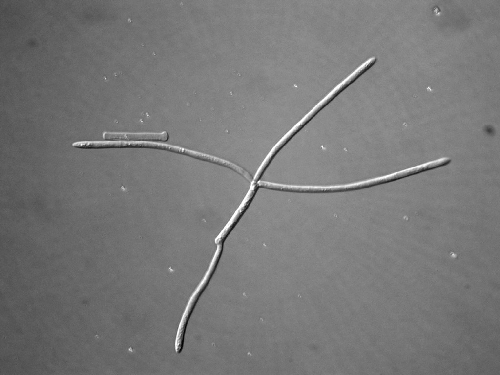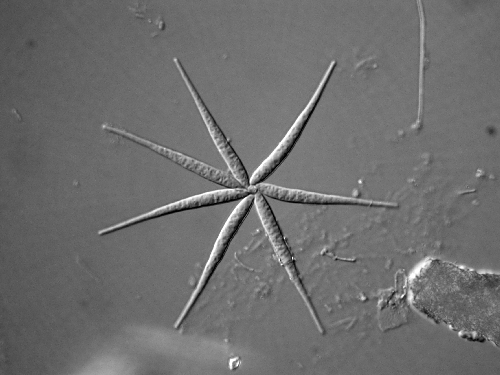Research (February 2007)
The broadly defined area of my research is aquatic microbial ecology. I am especially interested in advancing our understanding of the importance of aquatic fungi in carbon and nutrient cycling in lotic environments, their interactions with bacteria, and the effects of dissolved nutrients and eutrophication on both structural and functional fungal parameters. Specifically, my research interests mostly revolve around aquatic hyphomycetes – fungi that inhabit streams and rivers, decompose submerged leaf litter and wood, and mediate energy and nutrient transfer to higher trophic levels (aquatic macroinvertebrates and fishes).
Since 2000, I have been involved in NSF-funded projects at Coweeta LTER in the southern Appalachians working with Keller Suberkropp from the University of Alabama and colleagues from the University of Georgia. We are studying the effects of nutrient enrichment (inorganic N and P) and fungicides on stream ecosystem functioning. I am focusing on the keystone role of aquatic fungi in driving ecosystem-level responses to the above stressors simulating anthropogenic disturbance. I have been using ergosterol and 14C-acetate-to-ergosterol incorporation techniques to estimate fungal biomass and production associated with submerged leaves and wood, as well as 3H-leucine incorporation into proteins to estimate bacterial production. The recently developed acetate-to-ergosterol technique provides realistic estimates and has revolutionized our understanding of in situ fungal dynamics. Our results indicate that fungi are strongly affected by very moderate increases in nutrient availability in water and exert strong control over rates of organic matter decomposition, litter standing crop and, by extension, higher trophic levels through the ‘bottom-up’ effects. Responses of fungal parameters (biomass, production, sporulation rate of aquatic hyphomycetes and spore concentration in transport) and microbial respiration (mainly fungal) to nutrient enrichment were significant, while bacterial response (biomass and production) was limited. These findings suggest that fungi dominate coarse particulate organic matter processing in streams at different levels of nutrient availability. However, in contrast to ecosystems based on primary producers where nutrient enrichment increases basal carbon, carbon availability may be eventually reduced in detritus-based systems following eutrophication.
I believe that research that addresses issues of anthropogenic change is vital, given the degradation of aquatic habitats in the US and worldwide. In 2002-2004, during my postdoctoral work in Portugal, I was involved in the large EU-funded “RivFunction” project that aimed at developing methodology to assess riverine ecosystem functioning/health using a functional approach, i.e. organic matter decomposition and microbial parameters, in contrast to structurally based approaches (invertebrate or algae-based biotic indices) commonly used today in both the US and Europe. Two major types of anthropogenic impact were addressed in this project: eutrophication and riparian forest modification. Based on my experiments in Portugal, I found that fungal parameters measured at very early stages of leaf litter decomposition correlate strongly with the final decomposition rates and can be promising as a tool indicating changes in stream ecosystem functioning due to eutrophication. Currently, I am in charge of analyzing microbially related data from the entire consortium (9 European countries) and I am excited to extend our understanding of these relationships to a broader spatial scale.
Recently, I have initiated a pilot project aimed at linking fungal community structure associated with submerged decomposing leaves (based on both traditional and molecular approaches) with functional ecosystem parameters (i.e. fungal activity and microbially driven decomposition) in both stream and lake environments. I am planning to further explore this relationship using molecular techniques (amplifying rDNA from environmental samples with fungi-specific ITS or SSU primers, cloning and sequencing) and also to include bacteria in this research. I would also like to explore the relative importance of fungi and bacteria (both structurally and functionally) in decomposition of submerged wood, which, surprisingly, has never been studied.

